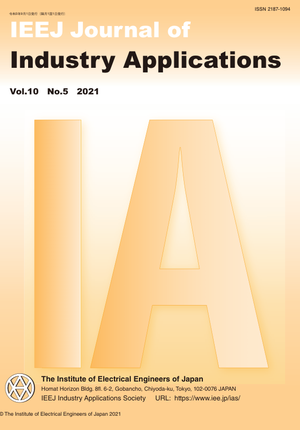Using Machine Learning to Reduce Design Time for Permanent Magnet Volume Minimization in IPMSMs for Automotive Applications
Using Machine Learning to Reduce Design Time for Permanent Magnet Volume Minimization in IPMSMs for Automotive Applications
カテゴリ: 論文誌(論文単位)
グループ名: 【D】産業応用部門(英文)
発行日: 2021/09/01
タイトル(英語): Using Machine Learning to Reduce Design Time for Permanent Magnet Volume Minimization in IPMSMs for Automotive Applications
著者名: Yuki Shimizu (Osaka Prefecture University), Shigeo Morimoto (Osaka Prefecture University), Masayuki Sanada (Osaka Prefecture University), Yukinori Inoue (Osaka Prefecture University)
著者名(英語): Yuki Shimizu (Osaka Prefecture University), Shigeo Morimoto (Osaka Prefecture University), Masayuki Sanada (Osaka Prefecture University), Yukinori Inoue (Osaka Prefecture University)
キーワード: interior permanent magnet synchronous motor (IPMSM),machine learning,surrogate model,support vector regression,XGBoost,real-coded genetic algorithm (RCGA)
要約(英語): Interior permanent magnet synchronous motors (IPMSMs) have been widely used as traction motors in electric vehicles. Finite element analysis is commonly used to design IPMSMs but is highly time-intensive. To shorten the design period for IPMSMs, various surrogate models have been constructed to predict relevant characteristics, and they have been used in the optimization of IPMSM geometry. However, to date, no surrogate models have been able to accurately predict the characteristics over the wide speed range required for automotive applications. Herein, we propose a method for accurately predicting the speed-torque characteristics of an IPMSM by using machine learning techniques. To improve the prediction accuracy, we set the motor parameters as the prediction target of the machine learning methods. We then used the trained surrogate model and a real-coded genetic algorithm to minimize the volume of the permanent magnet and showed that the design time can be significantly reduced compared with the case where only finite element analysis is used.
本誌: IEEJ Journal of Industry Applications Vol.10 No.5 (2021)
本誌掲載ページ: 554-563 p
原稿種別: 論文/英語
電子版へのリンク: https://www.jstage.jst.go.jp/article/ieejjia/10/5/10_21004461/_article/-char/ja/
受取状況を読み込めませんでした


